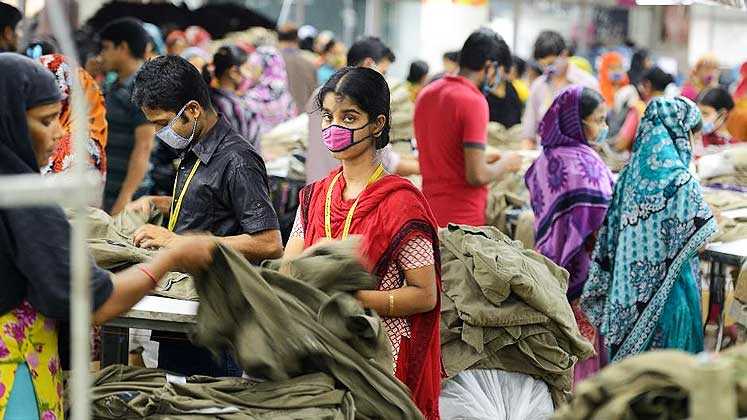
Readymade garment sector is the principal export-oriented sector of Bangladesh and considered the backbone of the country’s economy. It’s not only the biggest export earner but also the provider of large-scale employment opportunities.
However, there are many other sectors that are coming up strongly – leather and leather products, pharmaceuticals, ceramics, etc., to name a few.
Economists and experts are in favour of promoting the leather sector more strongly as they feel, after RMG, leather and leather products hold the highest export potential. Keeping the same in mind, the Bangladesh Finished Leather, Leather Goods and Footwear Exporters’ Association (BFLLFEA) in April this year demanded a uniform policy for all export-oriented sectors with regard to duties and other taxes, so that the leather sector can enjoy more benefits.
Some sectors are provided with high privileges, depriving others. It should be uniform for all sectors… Therefore, product diversification is needed to increase exports and reduce risk. For that, sectors with potential such as the leather industry should be promoted like the RMG sector, and a uniform policy is required, underlined some entrepreneurs involved with the leather industry.
The entrepreneurs’ plea seems to have moved the Government, which is now reportedly planning to extend the same facilities that the garment sector enjoys to others in an effort to diversify the country’s export basket and reduce dependency on apparels.
“In case of diversification, we will give the same facilities that we are giving to the garment sector this year,” underlined Chairman of the National Board of Revenue (NBR) Md Mosharraf Hossain Bhuiyan .
Bhuiyan made these observations at a luncheon meeting of the American Chamber of Commerce and Industry in Dhaka recently.
It may be mentioned here that the apparel sector enjoys a host of benefits including 4 per cent cash incentive on exports to new destinations, lower corporate tax and bonded warehouse facility.
The Government’s move to incentivise other sectors has raised a question amongst certain section of garment makers, who are afraid that by doing so, the desired focus and attention on readymade garments could get diverted.
“Diversification is good for economic development as dependency on one particular sector can have certain ramifications,” maintained Dr. Khondaker Golam Moazzem, Research Director of prominent civil society think tank Centre for Policy Dialogue (CPD) speaking to Apparel Resources.
But considering that the readymade garment sector is the principal export earner and mainstay of Bangladesh’s economy, Moazzem proposed restructuring the incentive procedures and parameters for garment industry to give the desired impetus (so that the focus on the apparel sector is not diluted) to it.
“The Government is incentivising the garment industry in various aspects but somehow that is not yielding the desired results; such measures are falling short of making any incremental contribution,” observed the Research Director of CPD.
Moazzem as such advocates incentivising the garment makers in terms of product diversification (making value-added and critical products which are in demand and fetch better margins), to inculcate better manufacturing practices through technological interventions, market diversification, etc. This would effectively promote the apparel sector while also encouraging and endorsing other export-oriented sectors, to balance things out accordingly.

Post a Comment